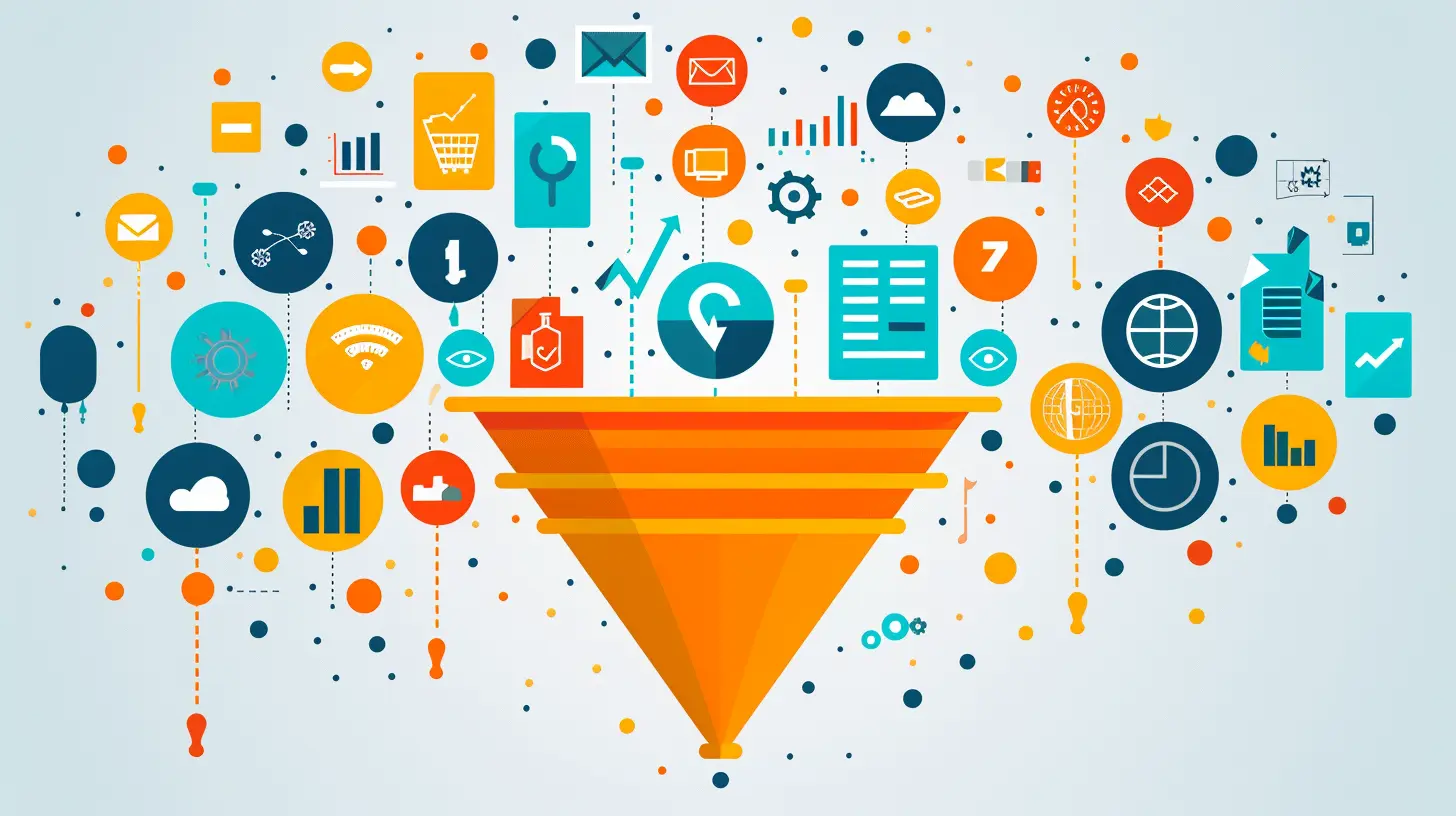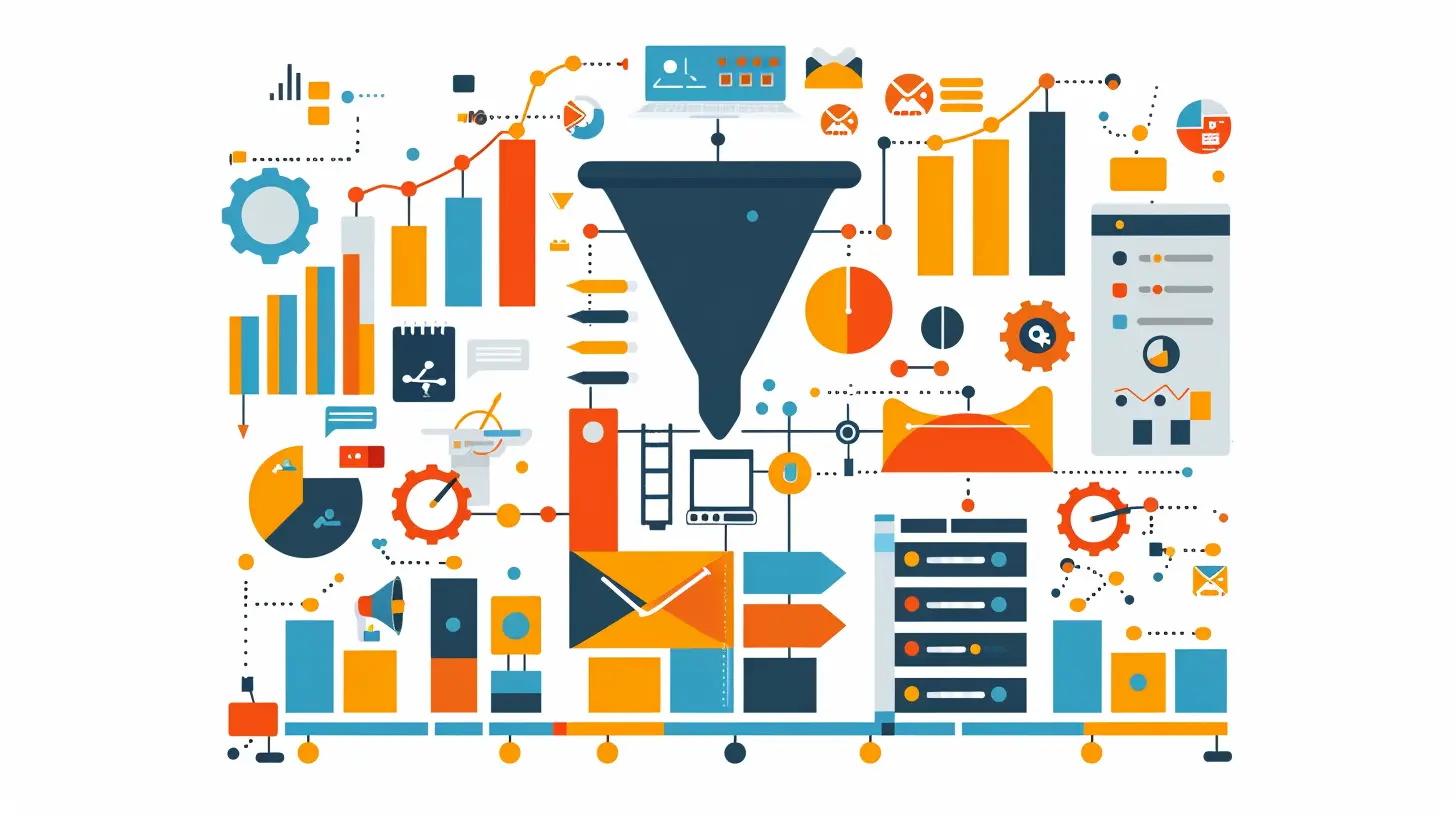How to Use Big Data for Competitive Advantage
23 September 2025
Big data is everywhere these days. From your morning cup of coffee to your late-night Netflix binge, data is being collected, analyzed, and used in ways we probably don’t even think about. But here’s the thing — while giants like Amazon, Google, and Facebook are already killing it with big data, you don’t have to be a tech behemoth to get in on the action. If you're running a business, big or small, you can use big data too — and turn it into a serious competitive advantage.
So, how do you actually do that? Let’s break it down.
What is Big Data, Really?
Let’s not overcomplicate things. Big data is just a fancy term for extremely large sets of data that can be analyzed to discover patterns, trends, and associations — especially relating to human behavior and interactions.It's not just about volume, though. Big data is often defined by the 3 Vs:
- Volume – The sheer amount of data.
- Velocity – The speed at which it’s created and processed.
- Variety – The different types of data (structured, unstructured, text, video, you name it).
If you’ve got data coming in from social media, customer reviews, sales reports, CRM systems, and even IoT devices, that’s big data. Now, the real trick lies in what you do with it.
Why Should You Care About Big Data?
Imagine you run an online shoe store (stick with me here). Every day, customers visit your site, click on products, abandon carts, leave reviews, and maybe even reach out through a chatbot.If you’re not gathering and analyzing this data, you’re basically blindfolded in your own business.
But, start tapping into that data, and suddenly you can:
- Predict what styles are about to take off.
- Tailor your ads to individual customers.
- Improve customer service.
- Identify which products are underperforming.
Big data lets you move from a reactive to a proactive business approach. And that, my friend, is where the competitive edge comes in.
Step-by-Step: How to Use Big Data for Competitive Advantage
Let’s get practical. Here’s a no-fluff roadmap to start using big data to your advantage.1. Define What “Advantage” Actually Means for Your Business
Before diving into data lakes and algorithms, take a beat and ask yourself:- What’s the business goal?
- Want to beat your competitors on pricing?
- Outperform them on customer experience?
- Launch products faster?
Your competitive advantage might lie in faster delivery, higher quality, personalized customer service, or even being more eco-friendly than your rivals. Until you define this, your data is just noise.
➡️ Pro Tip: Keep your goals specific and measurable.
2. Identify the Right Data Sources
You don’t need to collect every byte of information floating around the internet. Focus on what matters to your business.Here are some typical goldmines:
- Website analytics (page views, bounce rates, conversion funnels)
- Social media insights (mentions, engagement, sentiment)
- Customer feedback (reviews, surveys, support tickets)
- Sales transactions
- Supply chain data
- Public data sets (gov stats, industry trends)
The idea isn’t to hoard data, it’s to gather the kind that helps you answer your burning business questions.
3. Use the Right Tools and Tech Stack
Big data without the right tools is like trying to build IKEA furniture without the manual (good luck with that).Here are some popular tools you can start with:
- Google BigQuery – Great for analyzing large datasets in the cloud.
- Apache Hadoop & Spark – Ideal for more complex, large-scale processing.
- Tableau or Power BI – For turning numbers into jaw-dropping visuals.
- Python/R – If you’ve got some coding chops, this is where the deep magic happens.
SMEs can even start with Excel and Google Sheets, to some extent. The key is to start small, then scale up as you grow.
4. Analyze for Insights — Not Just Info
Here’s where most people get stuck: they collect data, stare at it, and shrug.The real value is in interpretation. Ask pointed questions:
- What do my most loyal customers have in common?
- Which marketing channel drives the highest ROI?
- Why are carts being abandoned at the last minute?
- What trends are emerging over the past 6 months?
Look for patterns and anomalies—think of yourself as a detective rather than a data hoarder.
5. Make It Actionable
All the insight in the world is useless unless you act on it. Let’s say your data shows that 60% of your sales come from two specific products. That’s not just interesting—that’s a flashing neon sign.You could:
- Promote those products more aggressively.
- Bundle them with slower-moving items.
- Stock up on inventory to avoid shortages.
Big data should guide your decision-making. If it’s not influencing strategy, you’re doing it wrong.
Real-World Examples of Big Data in Action
Need some inspiration? Here are a few cool examples of companies using big data to dominate.Amazon – The King of Personalization
Amazon doesn’t just suggest products randomly. Every "Customers Also Bought" recommendation comes from insane levels of data crunching. It’s not magic. It’s machine learning mining vast historical shopping behaviors to create your custom experience.Netflix – Content that Keeps You Hooked
Ever wonder how Netflix seems to know exactly what show you’ll binge-watch next? They're using viewer data, ratings, watch times, and more, to predict what you’ll love—and to decide what new content to produce. That’s data driving business at the speed of culture.Starbucks – Smarter Store Locations
Starbucks doesn’t pick store locations based on gut feelings. They use big data on traffic patterns, demographics, and purchase behavior to identify the most profitable spots.How Big Data Helps You Outcompete Others
Still wondering how all this gives you a competitive advantage? Let’s break it down.1. Better Customer Understanding = More Loyalty
When you know what your customers want, and you deliver on it consistently, they stick around. It’s that simple.Use data to personalize offers, preempt needs, and solve problems before they arise.
2. Faster & Smarter Decisions
Data cuts through the clutter and guesswork. You can pivot fast, test quickly, and reduce risk because you’re working with real-world info.3. Improved Operations & Cost Efficiency
Analyzing your supply chain could reveal inefficiencies and delays. Optimizing ad spend based on performance metrics lets you stretch every dollar. It all adds up.4. Innovation Backed by Evidence
Want to test a new product idea? Analyze customer feedback and buying patterns to see if there’s genuine demand. You don’t have to shoot in the dark.Challenges You Should Watch Out For
It’s not all sunshine and analytics, though. Big data also comes with its own set of headaches.1. Data Privacy & Compliance
If you’re collecting data, you’ve got to protect it. GDPR, CCPA — these aren’t just alphabet soup. Ignoring them can land you in serious hot water. Respect user privacy and be transparent.2. Data Overload
Too much data can paralyze decision-making. This is called "analysis paralysis." Focus on KPIs that matter.3. Talent Gap
Having tools is one thing. Having people who know how to use them? That’s another. You might need to invest in training or hire data-savvy professionals.4. Quality Over Quantity
Messy, incomplete, or incorrect data will sabotage everything. Regularly audit and clean your data.How to Get Started (Even If You’re a Small Business)
If you’re thinking, “This sounds great but I don’t have the budget for a full-blown data team,” don’t worry. Starting small is totally fine—and honestly, smart.- Pick one problem to solve with data.
- Choose one or two data sources.
- Use free or low-cost tools at first (Google Analytics, HubSpot, etc.).
- Learn the basics of data visualization and interpretation.
As you grow, you can build out your capabilities. Rome wasn’t built in a day, and your data empire won’t be either.
Future-Proofing Your Business with Big Data
The companies that survive and thrive in the future won’t be the biggest — they’ll be the smartest. And smart companies use data.Whether it’s predictive analytics, AI, or real-time dashboards, the possibilities with big data are only increasing. If you’re not using it yet, you’re already behind.
But here’s the good news: it’s not too late. Start now, start small, and build your competitive advantage one insight at a time.
Wrapping It Up
Big data isn’t just for the tech elite anymore. Whether you're running a startup or an established company, data can be your secret weapon. When used right, it helps you move faster, serve better, save money, and stay one step ahead of the competition.Always remember, it’s not about having the most data — it’s about making the best use of it.
So go ahead, roll up your sleeves, and start mining your data for gold. Your future self (and your bottom line) will thank you.
all images in this post were generated using AI tools
Category:
Big DataAuthor:

Michael Robinson
Discussion
rate this article
1 comments
Thorne McIlroy
Great article! Harnessing big data for competitive advantage is crucial in today’s fast-paced market. Your insights on analysis and strategic implementation are spot-on. Embracing these techniques will not only enhance decision-making but also drive innovation. Excited to see how businesses leverage these strategies for success! Keep up the fantastic work!
September 23, 2025 at 4:00 AM

Michael Robinson
Thank you for your kind words! I'm glad you found the insights valuable. Excited to see how businesses implement these strategies!


